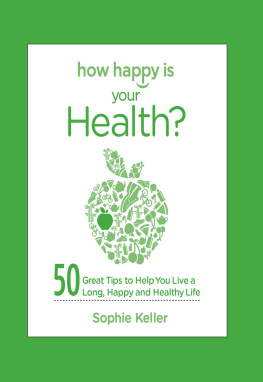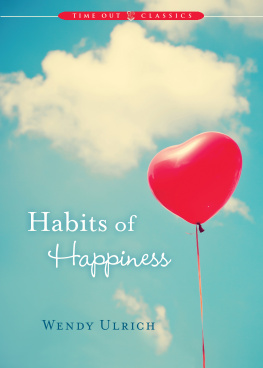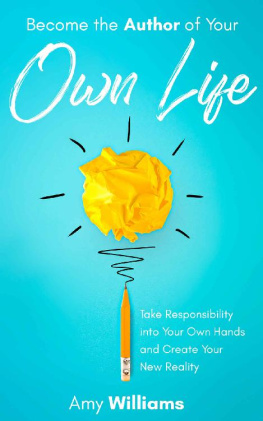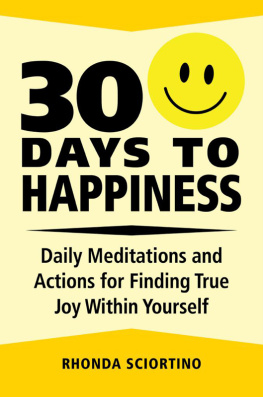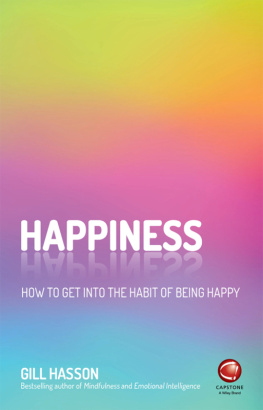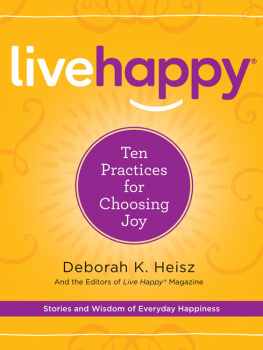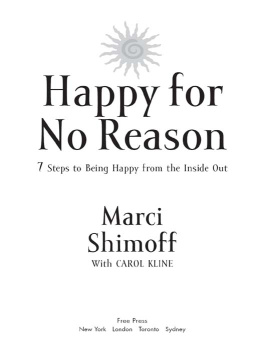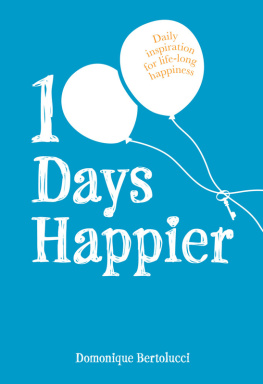First published 2014
Exisle Publishing Pty Ltd
Moonrising, Narone Creek Road, Wollombi, NSW 2325, Australia
P.O. Box 60490, Titirangi, Auckland 0642, New Zealand
www.exislepublishing.com
Copyright 2014 in text: Fiona Robards
Fiona Robards asserts the moral right to be identified as the author of this work.
All rights reserved. Except for short extracts for the purpose of review, no part of this book may be reproduced, stored in a retrieval system or transmitted in any form or by any means, whether electronic, mechanical, photocopying, recording or otherwise, without prior written permission from the publisher.
A CiP record for this book is available from the National Library of Australia.
Print ISBN 978 1 921966 31 6
ePub ISBN 978 1 77559 176 4 r
Version 1.0
Design and typesetting by Big Cat Design
Disclaimer
While this book is intended as a general information resource and all care has been taken in compiling the contents, this book does not take account of individual circumstances and is not in any way a substitute for professional advice. Always consult a qualified practitioner or therapist. Neither the author nor the publisher and their distributors can be held responsible for any loss, claim or action that may arise from reliance on the information contained in this book.
What makes you happy?
Sometimes the questions are complicated and the answers are simple. Dr Seuss
What do you want most in life? Most people would answer, I just want to be happy. Sounds simple, but what does happiness look like? And is the life you now lead bringing you closer to happiness?
To find out what makes you happy, lets break the complicated question into manageable pieces: What are you passionate about? What helps you to maintain a sense of hope and optimism? What rejuvenates you? Answering questions like these will help you to consciously create a life you really want to live, rather than one that just happens by chance or is based on things you dont truly value.
Another way of thinking about what makes you happy is to pinpoint those things that add to your wellbeing and quality of life. Wellbeing is about moving beyond just getting byits about thriving and flourishing. But how do you get from one place to the other? Wheres the map for the journey to happiness?
Creating happiness doesnt have to be an overwhelming task. While some people may need to make big changes to create a healthier lifestyle or stress less, setting goals to be happier need not include climbing mountains (although along the way, you might find you enjoy mountain climbing!).
The good news is that many simple, positive, healthy choices and activities promote wellbeing. Some people find that taking the time to experience simple pleasurespatting a dog, reading to a child, cookingbrings great peace and enjoyment. For others, greater happiness involves simplifying their life: de-cluttering their home, developing healthy routines, making time to relax, and spending time with loved ones bring a sense of happiness that was missing.
Although each of us finds happiness in different ways and in different places, there are things we have in common: meaningful experiences, connections with friends and family, and practising gratitude and compassion bring value to our lives and increase our wellbeing and happiness.
If its that simple, why arent we happy yet? Many of us have adopted lifestyles that dont support happiness. We lead lives that are too rushed, too stressed and too focused on things that dont really matter. Our obsession with economic development is destroying the natural environment. And gaps between the haves and the have-nots are widening. We need to rethink our way of life because our unhealthy lifestyles are making us physically and mentally unwell. Theyre making us unhappier, not happier.
The solutionsdoing things that support our wellbeing, finding opportunities to connect with others, and supporting the environment we live inare intrinsically linked.
In your heart and mind you have very personal reasons for wanting to bring more happiness into your life. You might want to feel better in yourself or more optimistic and hopeful about the future. Perhaps youd like to have a better appreciation of your skills, strengths and abilities. Or maybe youd just like to find ways to stress less and simplify your life.
If we focus on the things that promote wellbeing for us, for others and the environment, we can stress less and live a calmer, happier life.
A path of possibilities
This book isnt just about a spring-clean for your life; its also about starting a journey to sustainable, long-term wellbeing. A quick tidy-up never goes astray, but the key to real wellbeing is an everyday lifestyle filled with things that enhance happiness, such as caring for yourself and others.
My hope is that you will use this book to help you create extra happiness in your own time and on your own terms. It can help you to find space for extra happiness and explore the possibilities for bringing about positive change in your life. It will also help you appreciate whats already going well for you.
The ideas, information and activities in this book are designed to help you develop a vision of the life you want to lead. They will help you focus on your potential and the steps you need to take to make your vision a reality. Along the way, youll see yourself in the context of your relationships, your community and the environment. See this book as a guide to help you be the best you can be, to allow new possibilities to emerge and blossom, and to make a contribution to improving the world around you.
There are questions throughout the book to help you develop your vision of a happier life. They are part of a solution-focused approach to counselling developed by Steve de Shazer and Insoo Kim Berg in the 1980s. Solution-focused approaches help people create changes that will bring greater contentment and happiness to their lives.
The solution-focused approach to achieving happiness in your life is simple, though not always easy. It looks like this:
1. Develop a vivid, richly detailed picture of what happiness will look like in your life.
2. Think about what you do in your life and:
i If it works, dont fix it
ii If it works, do more of it
iii If it doesnt work, do something different.
3. Give yourself a pat on the back for the things you already do that make you happy, and keep taking small steps to expand your happiness even more.
Just as every person is different, so too is each persons pathway to happiness. In this book, rather than one-size-fits-all answers, you will find a range of questions and options to choose from. This gives you a real chance to explore what is right for you. This book does not tell you what to do or how to live your life; it provides you with a structure for planning and personal decision-making. You are developing your path of possibilities towards a unique, thoughtful, balanced and happy life. Ultimately, what makes you happy will be up to you: no one else can define happiness for you.
In Part 1 of this book, we start the journey by looking at your hopes and dreams, and the resources and plans you carry with you into each of the major areas of your lifeyour life domains. Thinking about our lives as having domains is a great way to help us zoom in on one aspect of life at a time, while remembering that all the domains are interrelated.
On this path, we are going to capture the best bits from the past and begin to create a vision of a brighter future. Lets start on the right foot by thinking about a few questions:


